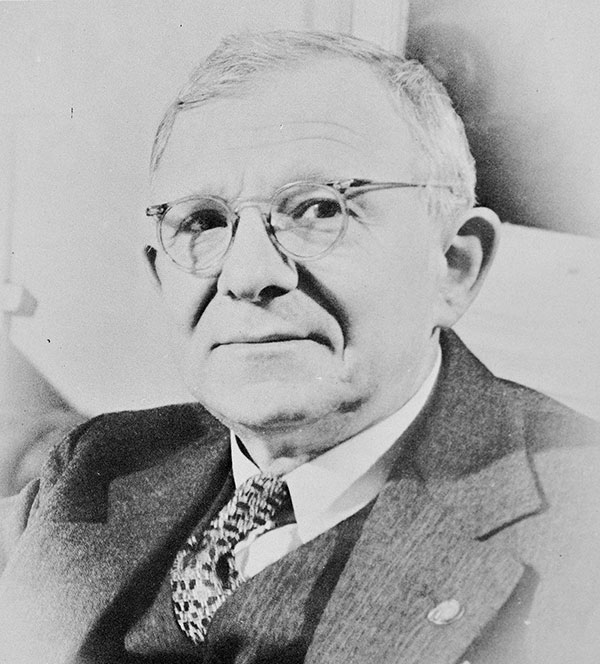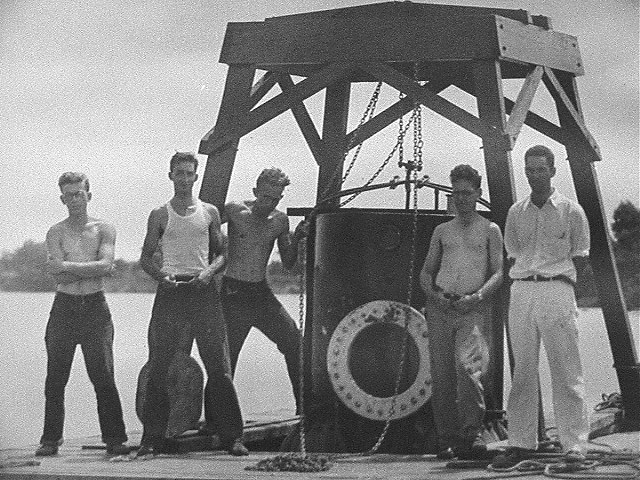The Natural History Society of Maryland (NHSM) was established in 1929 as a spin-off group from the Maryland Academy of Sciences (MAS) (present overseers of the Maryland Science Center in Baltimore). On Maryland Day, March 25, 1929, a group of men interested in the natural sciences broke away from the Maryland Academy of Sciences and formed the Natural History Society of Maryland. The Society’s Charter was officially signed on April 14th of that year.

Founding member Edmund ‘Doc’ Fladung
Founding member Edmund ‘Doc’ Fladung was President of the Society from 1929 until his death in 1956. In the Society’s 1946 Annual Report, he stated that “this Society is an important cultural adjunct to the life of our City and State, and I feel it is a patriotic duty to keep it functioning and preserve it for future generations.”

Gilbert Klingel and the NHSM Dive Team
Gilbert Klingel, one of the founders of the NHSM, was one of the first to explore beneath the waters of the Chesapeake Bay. He built a ‘bentharium,’ a thick metal cylinder with a glass cover on one end, to observe inhabitants of the bay in their own environment. You can read about his adventures in his book, The Bay.
In 1936, the Society established a ‘Maryland Natural History Museum’ at Druid Hill Park in Baltimore City. This was a display museum open to the public. In 1949, there were over 60,000 visitors a year. Scientific research collections were housed at the Society’s Bolton Street office. Programs offered by the Society then included a Junior Naturalist’s program, specimen loans to schools, organized public and private natural history outings, and nature education publications.
In the 1940s, the Society was divided into Departments, with each responsible for their respective inventories of collections. For much of the current collection, our understanding of their size and origin is based on the earlier records of these Departments. Shortly after WW II, the Society suffered a decline in many of its programs and membership. This resulted from general societal changes, but the death of the founding President, Edmund Fladung, a dynamic person with a strong personality, also contributed. The museum at Druid Hill Park continued until the early 1970s. From the late 1970s to the present, the chief activities of the Society have been sponsoring public lectures, publishing “The Maryland Naturalist,” and “Bulletin of the Maryland Herpetological Society,” and organizing public natural history education activities, such as Nature Study Day held at Oregon Ridge Park in 1999.
Since its incorporation in 1929, the NHSM has had three headquarters located throughout Baltimore City: 605 St. Paul Street, 2101 – 2103 Bolton Street, and 2643 North Charles Street. We started a new chapter in our history in 2006 with the purchase of a 9,000-square-foot building at 6908 Belair Road in Overlea, Baltimore County. The rest of this website will give you a glimpse into what we are doing now.
